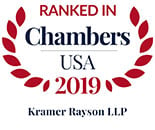Business necessities sometimes dictate a reduction in the workforce. RIF’s can be complicated, especially those that involve a large segment of the workforce. While the “best practices” listed here are a good place to start, there’s no substitute for seasoned legal counsel walking you through this process.
First, get your team in place. We recommend creating a special management committee with planning and implementing the RIF. This should be a diverse group (e.g., senior management, HR manager, and counsel). The committee should determine the RIF methods (e.g., hiring freeze, voluntary RIF, early retirement enhancements, etc., followed by an RIF) and then develop a written RIF policy or guidelines.
Timing is key. Decide how early to announce possible layoffs and exit incentive programs. Consider early communication that RIF may occur to combat rumors. Let the information come from company management, not the grapevine. Tame the rumor mill.
Incorporate as many objective selection criteria as possible. Examples of objective factors: attendance records (FMLA leave excepted), positive consideration of years of service and/or time in position, past performance ratings. But, be careful not to “objectify” subjective factors. Putting numbers on subjective factors (such as current performance) does not make them objective.
If reducing in jobs where there are multiple employees, carefully define who is similarly situated before comparing employees for retention. Compare employees by the work actually performed. Avoid comparing employees merely by job title or by the employees who report to the same supervisor.
Develop a prepared worksheet that managers must use to compare proposed RIF candidate(s) with peers against the RIF criteria. Require detailed justifications on the paperwork where individuals to be laid off are in protected categories.
Select decision makers who can convincingly explain about the employee’s work and job performance. This is usually a department manager. If a first level supervisor has a doubtful ability to keep his or her mouth shut (for example, remarks about age or sex), exclude them from the decision-making process.
Have a diverse committee review the reduction recommendations. The committee should have strong leader who is a good witness and is familiar with company RIF policy and legal implications of layoffs. Include management, HR, AA/EEO and legal counsel (for advice). The committee must critically review and demand detailed justification for all aspects of decision (e.g. comparison group, performance, skills) of any decision that results in the layoff of protected employees; no rubber stamp. In larger reductions, have a statistical analysis prepared before the review committee meets. The analysis should be arranged by, and prepared for, qualified counsel. A proper statistical analysis (in a large reduction) is beyond the skills of most HR representatives. Often, an expert statistician is needed to create the proper pools and run appropriate statistical models.
Using voluntary separation benefits, especially pension enhancement or bridging years of service, can significantly reduce the risk of liability. Once an employer gives “serious consideration” to implementing a voluntary separation program, it has a duty to avoid making misstatements to employees about the possibility that the employer might offer a voluntary separation program. An employer who makes any statement about future benefits (such as severance or retiree medical benefits), whether in response to questions or on the employer’s own initiative, will be held liable for any inaccurate information:
(a) when the statement is materially misleading when made; or
(b) when the statement is true when made but turns out to be inaccurate because of later decisions and the employer fails to timely provide participants with the correct information.







